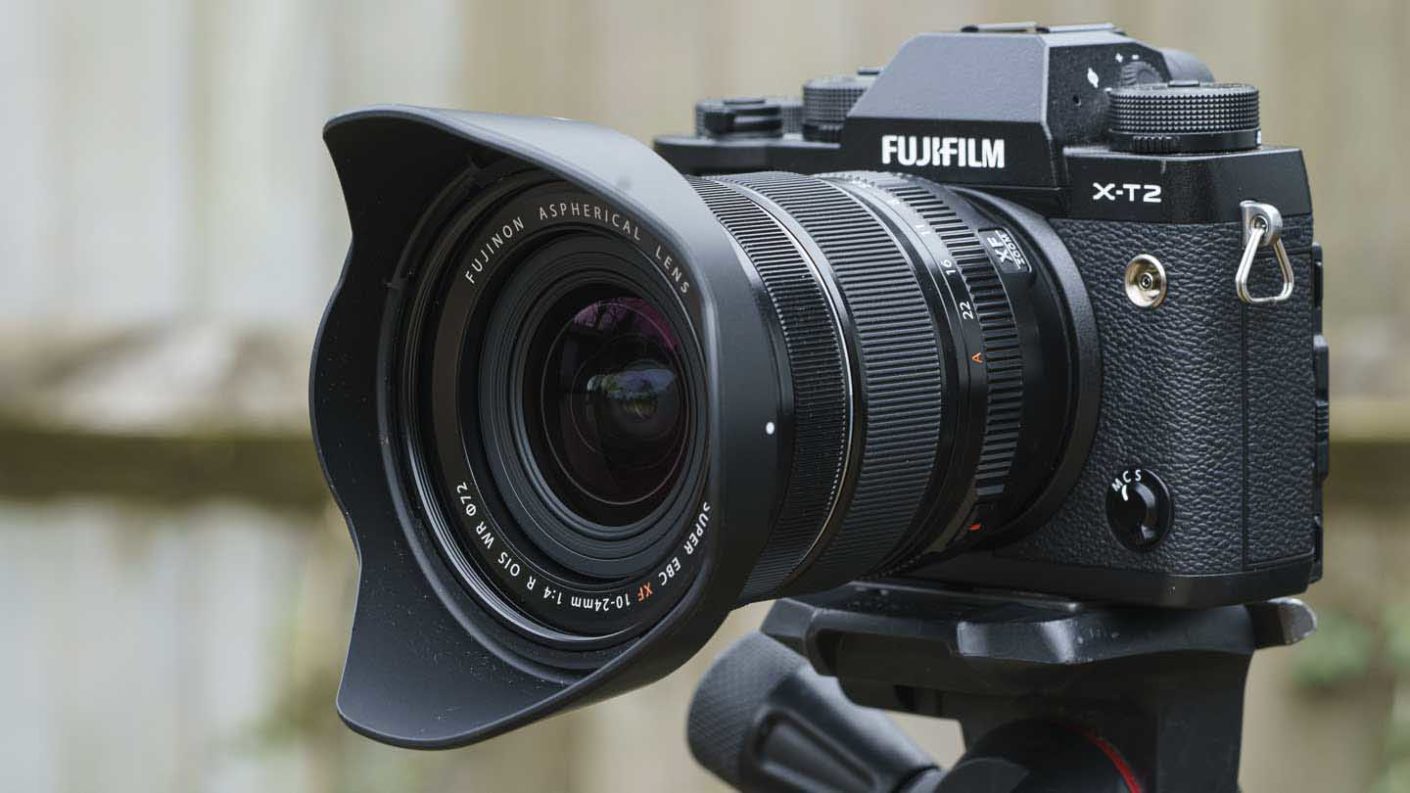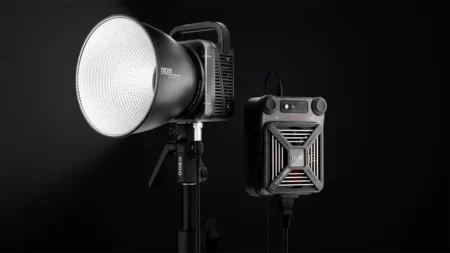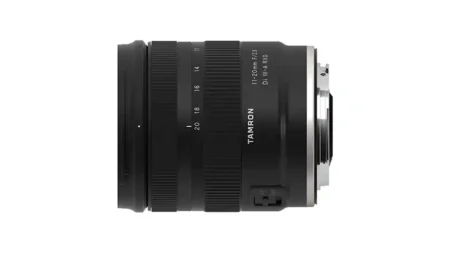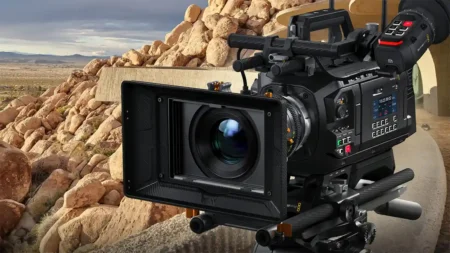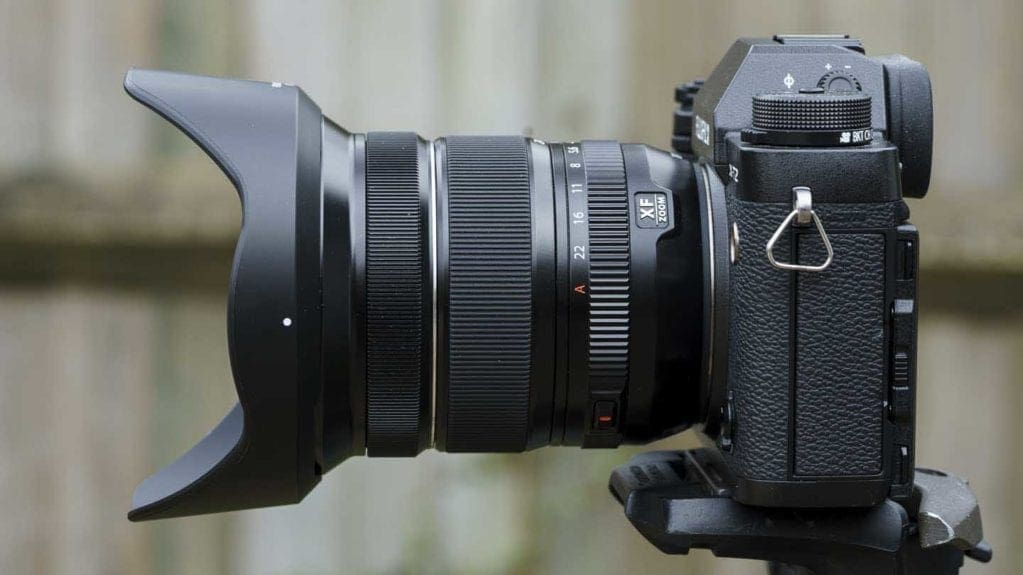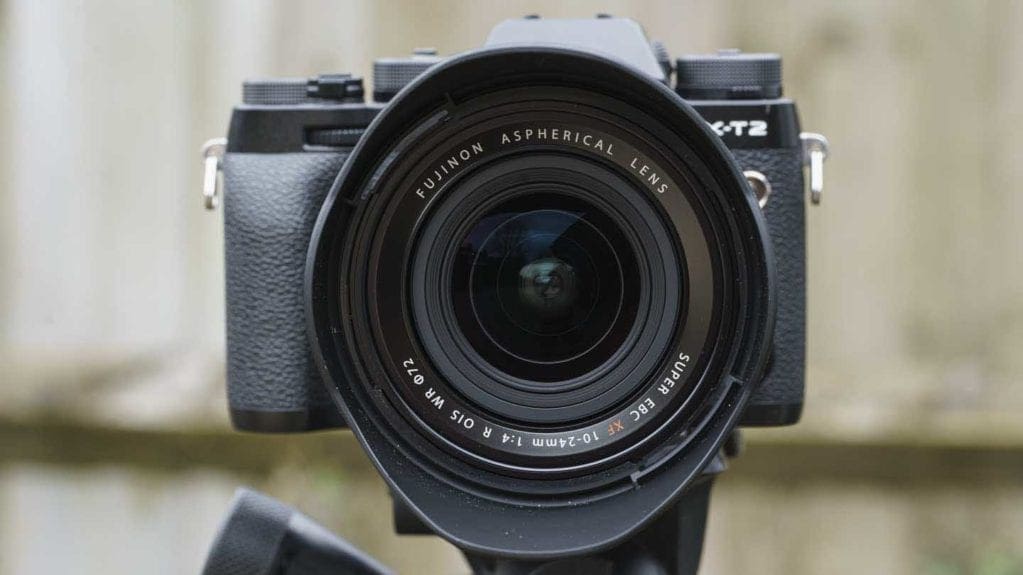A zoom lens like the XF 10-24mm F4 R OIS WR is a more natural partner for one of Fuji’s mini-DSLR style cameras like the Fuji X-T4, X-T3, Fuji X-S10 or X-T30. However, I’ve also used it on the rangefinder-esque Fuji X-E4 – it and the Fujifilm X-Pro3 are more commonly paired with the company’s prime lenses. And while the XF 10-24mm F4 R OIS WR feels front-heavy on the X-E4, it’s not unwieldy.
Fujifilm’s lens build quality is generally very good and the XF 10-24mm F4 R OIS WR doesn’t let the side down, it feels well made and looks good.
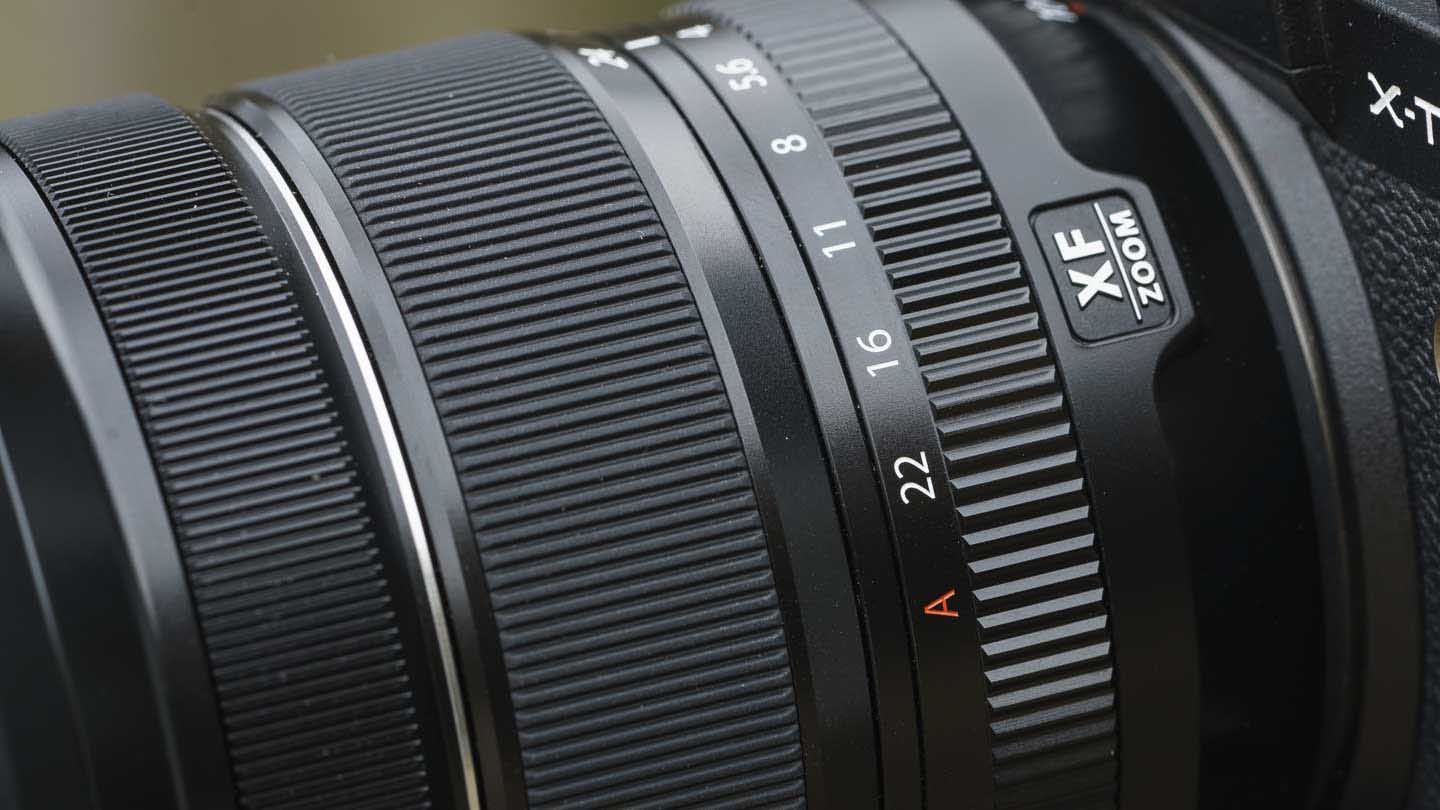
In action, the aperture and zoom rings feel good, they have just the right tension so you don’t feel like you’re fighting the rings to turn them but they’re not sloppy or slack either. I didn’t experience any zoom creep when I carried the camera on a strap over my shoulder between shots.
It requires a little over an eighth of a full turn, roughly 50°, to zoom from the 10mm end to the 24mm end of the lens.
There’s no ‘declick’ option for the aperture ring, which isn’t ideal for video, but the feedback is good when you’re adjusting the aperture setting for stills.
The manual focus ring towards the front end of the lens feels a little looser than the zoom ring, but not excessively so. The movement is nice and smooth but in the absence of a distance scale, there’s a 50/50 chance of rotating it the wrong way the first few times you use it.
As a focus-by-wire lens, you don’t get any feedback from the optic when you reach the closest or furthest manual focus points.
